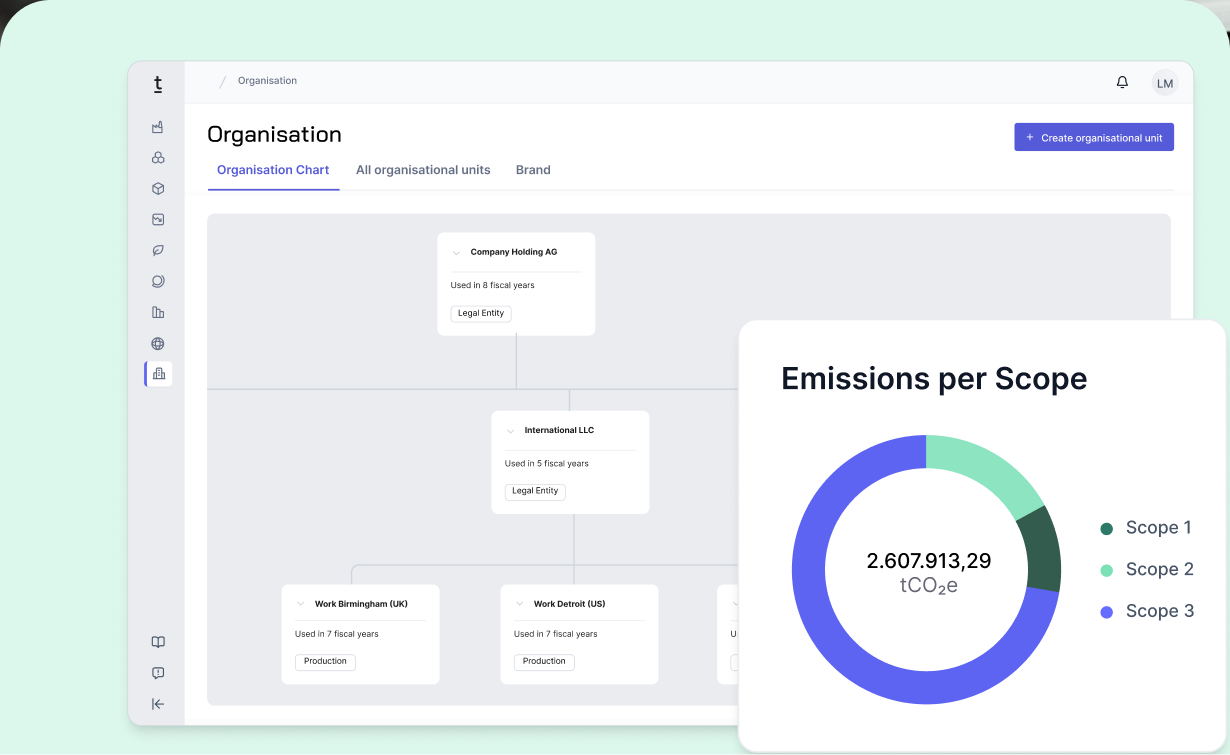ESRS Datapoint-Mapping

What is datapoint mapping
Datapoint mapping is the structured process of assigning individual data fields - so-called datapoints (DP) - from a reporting standard or questionnaire to content-related corresponding fields in another standard or questionnaire. The goal is to identify content overlaps in order to avoid having to collect or maintain the same information multiple times.
The idea is to leverage synergies and reduce the overall reporting effort by making data transferable across different systems, standards, or questionnaires. It is important that this process is designed in a way that preserves the meaning, significance, and structure of the respective datapoints.
Objective of datapoint mapping
The overarching goal of mapping is to use existing data efficiently and for multiple purposes. This aims to minimize the effort for companies when applying multiple standards in parallel or when transitioning from one reporting standard to another. A current example is the shift from the European Sustainability Reporting Standards (ESRS) to the voluntary standard for non-capital-market-oriented SMEs (VSME) due to the announced changes following the Omnibus Update.
What needs to be considered in mapping
When mapping datapoints, more needs to be considered than just content alignment. It is crucial that the scope, structure, and methodology of the data also align. Otherwise, the significance of the information could be distorted.
- Content Alignment: Datapoints should only be mapped when they sufficiently match in content - regardless of whether the match is full or partial.
- Granularity and Scope: Standards often differ in their required level of detail. For example, while the ESRS requires annual data, the Carbon Disclosure Project (CDP) in some cases calls for quarterly information.The distinction between qualitative and quantitative information is also essential: for instance, B2 in the VSME Basic Module asks about goals for monitoring the implementation of transition concepts toward a more sustainable economy. These goals can be described qualitatively. In contrast, the ESRS generally require quantitative reporting of targets. Therefore, data can only be meaningfully transferred between standards if the scope and granularity of the requirements sufficiently match.
- Methodological Consistency and Definitions: The underlying methodology may also vary. One example is the different calculation approaches for Scope 2 emissions, such as the location-based versus market-based approach. Furthermore, reporting standards differ in the calculation standards they reference: while some require the GHG Protocol Corporate Accounting and Reporting Standard as the basis for emissions accounting, others refer to ISO 14064. These differences impact, for example, emissions calculations, data collection, or system boundaries. For consistent and traceable reporting, it is therefore essential to clearly state the calculation standard used, including the specific method.
Possible mapping types
Existing official mappings with ESRS
There are already official mappings between the datapoints of the ESRS and other reporting standards, some of which were created by EFRAG. These serve as guidance for companies to efficiently use existing data for CSRD reporting - or vice versa.
1. CDP and ESRS E1:
The CDP (Carbon Disclosure Project) is an established framework for disclosing environmental data within the context of ESG reporting. There is an official mapping between CDP and ESRS, published by CDP and EFRAG, which particularly covers climate-related disclosures such as transition plans, target setting, Scope 1, 2, and 3 emissions, and carbon pricing. The mapping is from ESRS E1 to CDP and is differentiated into full, partial, and non-covered alignments.
2. GRI and ESRS:
The GRI (Global Reporting Initiative) is the most widely used standard for sustainability reporting worldwide. There is also an official mapping between GRI and ESRS. Due to the high degree of interoperability between ESRS and GRI, companies reporting in accordance with the ESRS can also automatically publish a report “with reference to” the GRI Standards. Tanso’s ESG data management module is officially verified by GRI for reporting “with reference to.” This makes it possible to reuse your CSRD report in Tanso for GRI purposes at the same time.
3. ISSB and ESRS:
The International Sustainability Standards Board (ISSB) is an organization that develops global standards for sustainability reporting. There is also an official mapping with ESRS for ISSB. This is particularly helpful for companies operating within a global reporting framework, enabling the parallel or coordinated application of both standards.
ESRS datapoint mapping within the CSRD
In the context of the CSRD, datapoint mapping holds particular relevance. The goal is to systematically link the material sub-sub-topics identified as part of the Double Materiality Assessment (DMA) with the relevant Disclosure Requirements (DRs) of the ESRS – and in the next step, to identify the corresponding reportable, material datapoints.
Objective of the Mapping:
Based on a sub-sub-topic classified as material (e.g., Climate Change (E1), Waste (E5), or Corporate Culture (G1)), the relevant DRs and datapoints to be disclosed in the sustainability report are identified. If a sub-sub-topic is not classified as material, all related DRs and datapoints are omitted.
Challenge Due to Lack of Official Guidance:
So far, neither the ESRS nor the Excel file published by EFRAG containing all datapoints (EFRAG datapoint Excel) provide a complete, direct mapping between material sub-sub-topics and their associated datapoints.
The new mapping document EFRAG ID 177 shows which DRs result from each topic in accordance with ESRS 1 AR 16. However, the mapping ends at the DR level and does not include a linkage to individual datapoints.
Information Materiality:
A DR may include multiple datapoints, each of which must be individually assessed for materiality (e.g., radioactive waste under ESRS E5). Non-material datapoints can be excluded with justification (see ESRS 1, para. 34).
Additional Particularities:
- Multiple Mappings: Datapoints can be assigned to multiple topics (e.g., MDR-PATs).
- Cross-Cutting Topics: Disclosures from ESRS 2 are mandatory regardless of the DMA.
- Filling Gaps: Companies must add additional, specific datapoints if a material topic is not covered by the ESRS (ESRS 1 §§ 11, 30(b)).
Special case VSME: Splitting datapoints in mapping
As a rule, datapoints are predefined and equipped with a datapoint ID; an exception currently exists in the case of the VSME standard. For the disclosure requirements within the VSME, no datapoints have been defined by EFRAG to date. As a result, individual datapoints may include several aspects or components, which should be considered separately during processing and mapping.
In such cases, it may be useful to split a composite datapoint into clearly distinguishable components. This applies in particular to datapoints that combine several disclosure obligations in one entry, e.g., different categories of Scope 3 emissions. Such content segmentation is also in line with practices in other reporting standards and helps improve data comparability and reusability.
Within the Tanso software, this interpretive flexibility is actively supported. Affected datapoints are initially captured in full. Whether and how individual aspects of a datapoint are ultimately excluded is the responsibility of the reporting company.
Tanso’s support for datapoint mapping
Through the automated mapping of datapoints across standards such as ESRS, GRI, CDP, or VSME, Tanso significantly reduces manual effort. This includes leveraging official mappings (e.g., from EFRAG, GRI, or CDP) while also allowing for individual customization - especially where datapoints cover multiple aspects or interpretation gaps exist.
Features such as the flexible handling of unstructured VSME datapoints or the segmentation of complex disclosures (e.g., Scope 3 categories) are actively supported within the software. At the same time, companies retain control over what content is ultimately included or excluded - based on their own materiality assessment.
Thanks to official GRI verification, database-driven mapping, and a user-friendly interface, Tanso provides a comprehensive solution for ESG data management aligned with both regulatory and voluntary reporting requirements.












































.avif)







.jpg)
.jpg)




















-p-800.webp.avif)
-min-p-800.webp.avif)






-p-800.webp.avif)

